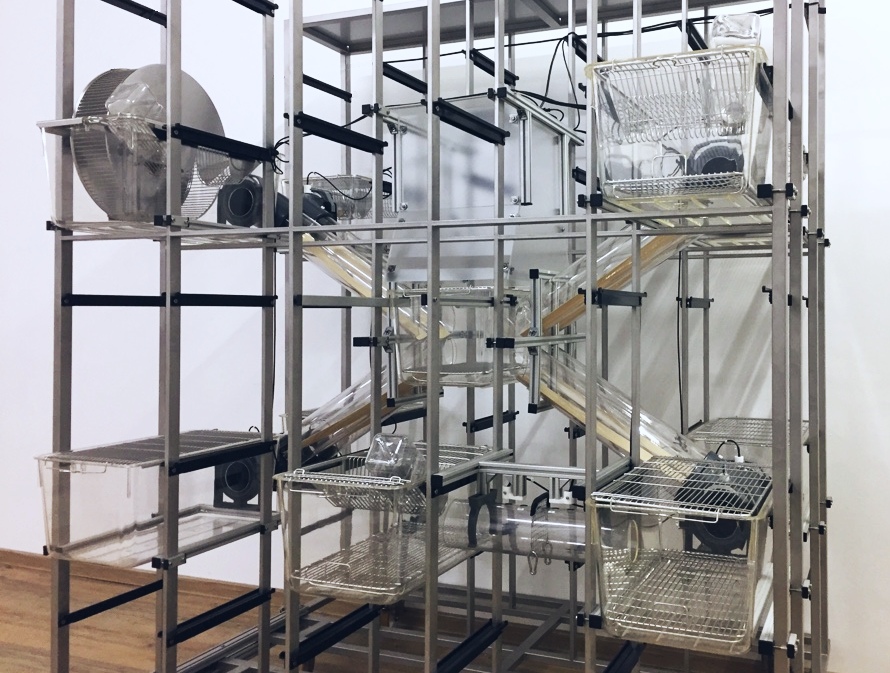
The Small World system is a home cage environment in which various ecologically relevant resources are freely available at distinct positions. The fully automated monitoring of the rat behavior in this quasi-natural environment allows the study of motivation and value based decision making. The deeper knowledge of the needs and preferences of laboratory animals is essential for improving animal welfare (3Rs – Refinement).
A total of eight resource cages are placed at equal distances to a center cage. Typical examples are water, food, nesting material, an adverse stimulus (e.g. odor of a predator), a running wheel for voluntary activity, and/or an option for social interaction. Thermal cameras and PIR sensors detect the animal approaching a resource cage and for how long it remains there 24/7. Video introduction
The Small World for rats was developed in close cooperation with Dr. Lorenz Gygax, Humboldt University in Berlin.
Hardware features:
Software features: